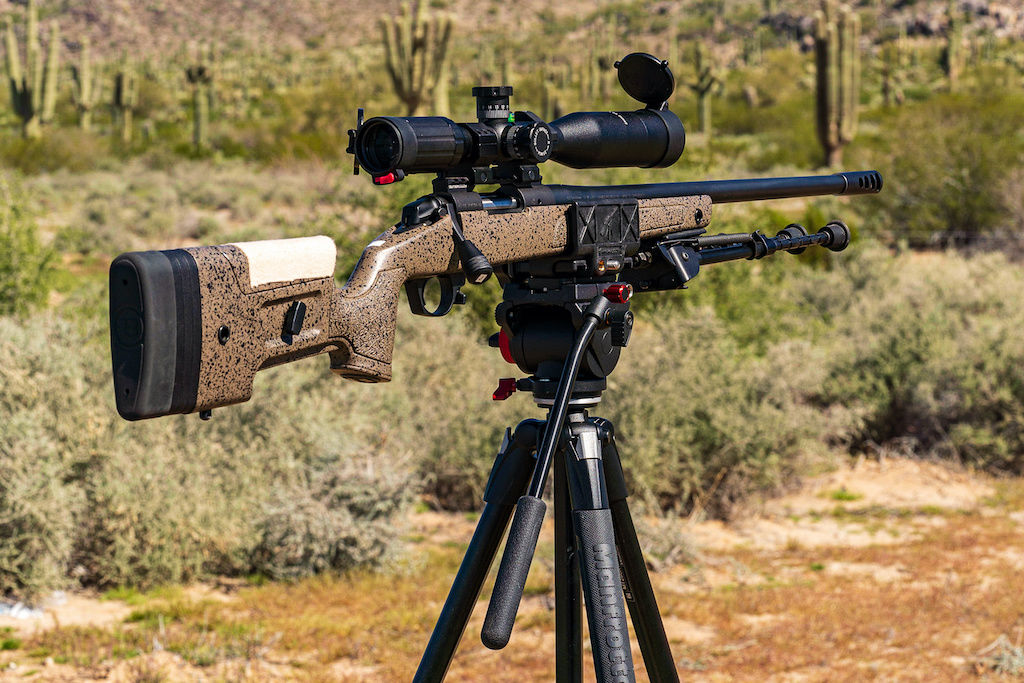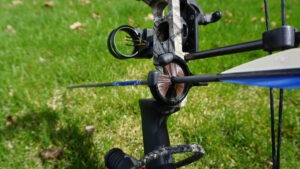Largemouth bass fishing is a popular recreational activity in Minnesota, attracting anglers from all over the country. With its vast network of lakes and rivers, the state offers excellent opportunities to catch these elusive and exciting fish. In this article, we will delve into the world of largemouth bass fishing in Minnesota, highlighting the characteristics of the species, the best lakes to fish, essential gear, tips and techniques for success, and the conservation efforts in place to protect this valuable resource.
Understanding Largemouth Bass Fishing
Before you head out to the lake, it’s important to have a good understanding of largemouth bass and their behavior. These fish are known for their aggressive nature and their preference for shallow, weedy areas. They have a distinct appearance, with a dark greenish color on their backs and a lighter, almost yellowish, color on their bellies. The most distinguishing feature of the largemouth bass is, of course, its large mouth, which allows it to engulf prey almost as big as its own size.
When it comes to largemouth bass fishing, knowledge is power. Understanding the characteristics and behavior of these fish can greatly increase your chances of success on the water. So, let’s dive deeper into the world of largemouth bass and explore what makes them such a fascinating species to target.
Characteristics of Largemouth Bass
In addition to their appearance, largemouth bass have several unique characteristics that make them a challenging and exciting species to catch. They are highly adaptable and can survive in a wide range of habitats, from small ponds to large lakes and even rivers. This adaptability is one of the reasons why largemouth bass can be found in so many different bodies of water across the United States.
Another interesting characteristic of largemouth bass is their opportunistic feeding behavior. These fish are known to be voracious predators, preying on a variety of aquatic creatures. From fish and crayfish to frogs and insects, largemouth bass have a diverse diet that allows them to thrive in different environments. This adaptability in feeding habits also means that anglers have a wide range of bait options to choose from when targeting largemouth bass.
One of the most thrilling aspects of largemouth bass fishing is their aggressive strikes. When a bass spots its prey, it will often launch itself out of the water with incredible force, creating a heart-pounding moment for any angler lucky enough to witness it. This aggressive behavior is not only exciting to experience, but it also adds an element of challenge to the sport of bass fishing. Successfully hooking and landing a largemouth bass requires skill, patience, and a bit of luck.
Ideal Conditions for Largemouth Bass Fishing
While largemouth bass can be caught year-round, there are certain conditions that are more conducive to success. Understanding the ideal conditions for bass fishing can help you plan your trips and maximize your chances of landing a trophy-sized fish.
One of the key factors to consider when targeting largemouth bass is the time of day. Bass are most active in the early morning and late afternoon, when the water temperature is cooler and the light conditions are more favorable for feeding. During these times, bass will often move closer to the surface and become more aggressive in their pursuit of prey. So, if you want to increase your chances of catching a largemouth bass, it’s a good idea to set your alarm clock and hit the water early in the morning or in the evening.
In addition to the time of day, water temperature also plays a crucial role in largemouth bass activity. These fish are warm-water species, meaning they are most active when the water temperature is between 65 and 85 degrees Fahrenheit. During the summer months, when the water is warmer, largemouth bass become more active and tend to feed more aggressively. This is why many anglers consider summer to be the prime season for bass fishing.
When it comes to habitat preferences, largemouth bass are often found in areas with abundant vegetation. Lily pads, submerged weeds, and fallen trees are all prime spots to target when fishing for bass. These areas provide cover for the bass, allowing them to ambush their prey while remaining hidden from predators. The presence of vegetation also attracts smaller baitfish and insects, which in turn attract largemouth bass. So, if you’re looking to hook a big bass, be sure to focus your efforts on areas with plenty of vegetation.
As you can see, there is much more to largemouth bass fishing than meets the eye. From their unique characteristics to the ideal conditions for success, understanding these aspects of bass fishing can greatly enhance your angling experience. So, next time you head out to the lake, take a moment to appreciate the complexity and beauty of the largemouth bass and the sport of bass fishing.
Top Largemouth Bass Lakes in Minnesota
Minnesota is home to numerous lakes that are renowned for their largemouth bass fishing opportunities. Here are three of the best lakes in the state:
Lake Minnetonka
Lake Minnetonka, located just west of Minneapolis, is one of Minnesota’s premier bass fishing destinations. This expansive lake covers over 14,000 acres and offers a variety of habitats for largemouth bass.
Anglers can find bass in shallow bays, rocky points, and weed beds throughout the lake. The diverse structure of Lake Minnetonka provides ample hiding spots and feeding areas for the bass, making it an ideal environment for them to thrive.
One of the unique features of Lake Minnetonka is its excellent water clarity. The clear waters make sight fishing a popular technique here, allowing anglers to spot the bass and target them with precision. This adds an exciting element to the fishing experience, as anglers can witness the bass’s behavior and reactions to their lures.
In addition to largemouth bass, Lake Minnetonka is also home to other popular game fish, such as walleye and northern pike. This diversity of species makes it a well-rounded fishing destination, catering to anglers with different preferences.
Mille Lacs Lake
Known as the “Walleye Capital of the World,” Mille Lacs Lake is also a fantastic destination for largemouth bass fishing. Located in central Minnesota, this massive lake spans over 132,500 acres and has a maximum depth of 42 feet.
Largemouth bass can be found in the lake’s abundant weed beds, rocky shorelines, and submerged structure. These areas provide excellent cover and forage for the bass, allowing them to grow to impressive sizes. Mille Lacs Lake is known for producing trophy-sized bass, making it a favorite among serious bass anglers.
Aside from the exceptional bass fishing, Mille Lacs Lake offers a picturesque setting with its crystal-clear waters and scenic shoreline. Anglers can enjoy the beauty of the lake while pursuing their favorite fish species.
Leech Lake
Located in north-central Minnesota, Leech Lake is another top destination for largemouth bass fishing. Covering over 112,000 acres, this expansive lake offers ample opportunities to target bass.
Leech Lake is characterized by its diverse structure, including rocky points, submerged islands, and expansive weed beds. These areas provide ideal habitat for largemouth bass, attracting them in large numbers. Anglers can explore the various structures and find the perfect spot to cast their lines.
One of the unique features of Leech Lake is its reputation for producing trophy-sized bass. The lake’s healthy population of largemouth bass offers anglers the chance to catch some truly impressive fish.
In addition to largemouth bass, Leech Lake also offers excellent fishing opportunities for other popular game fish, such as muskie and northern pike. Anglers can enjoy a multi-species fishing experience, adding excitement and variety to their trips.
Overall, Minnesota’s top largemouth bass lakes provide anglers with exceptional fishing experiences. From the expansive waters of Lake Minnetonka to the trophy potential of Mille Lacs Lake and the diverse structure of Leech Lake, there is something for every bass angler in the Land of 10,000 Lakes.
Essential Gear for Largemouth Bass Fishing
When it comes to gear, having the right equipment can make all the difference in your bass fishing success. Here are some essential items to consider:
Rods and Reels
For largemouth bass fishing, a medium to medium-heavy spinning or baitcasting rod is recommended. The rod should have enough backbone to handle the fight of a bass while still providing sensitivity to detect subtle strikes. Reels should be matched to the rod and can be either spinning or baitcasting, depending on personal preference. It’s also important to spool your reel with the appropriate line, usually monofilament or fluorocarbon in the 10-20-pound test range.
Lures and Baits
When it comes to lures and baits, bass are known to be attracted to a wide variety of offerings. Some popular lures for largemouth bass include plastic worms, crankbaits, spinnerbaits, and topwater plugs. These lures can be fished in different ways, such as jigging, casting, or trolling, depending on the conditions and the bass’s feeding behavior.
Tips and Techniques for Successful Largemouth Bass Fishing
To maximize your success on the water, here are some tips and techniques to keep in mind:
Best Time of Day for Fishing
As mentioned earlier, largemouth bass are most active during the early morning and late afternoon, so these are the prime times to be on the water. However, don’t discount the potential for midday action. Bass can be found throughout the day, especially when the weather is overcast or during periods of low light.
Weather Impact on Bass Fishing
The weather can have a significant impact on largemouth bass behavior and feeding patterns. During periods of stable weather, bass tend to be more predictable and willing to bite. However, changes in weather, such as a front moving through or a sudden drop in temperature, can trigger a feeding frenzy. Pay attention to weather conditions and adjust your tactics accordingly.
Conservation Efforts for Largemouth Bass in Minnesota
Minnesota has implemented various regulations and conservation practices to ensure the long-term sustainability of largemouth bass populations. It is important for anglers to familiarize themselves with these regulations and follow them to protect the resource.
Regulations and Limits
The Minnesota Department of Natural Resources (DNR) has set specific regulations and limits for largemouth bass fishing. These regulations include minimum size limits, bag limits, and closed seasons. It is crucial for anglers to adhere to these regulations to maintain healthy bass populations and protect the fishery for future generations.
Catch and Release Practices
Catch and release is an important conservation practice that helps preserve largemouth bass populations. When practicing catch and release, it’s essential to handle the fish with care, minimize stress, and release the fish back into the water as quickly as possible. Using barbless hooks and avoiding excessive handling can also increase the chances of survival for released fish.
Conclusion
In conclusion, Minnesota offers some of the best largemouth bass fishing opportunities in the country. The state’s diverse lakes and rivers provide ample habitat for these exciting game fish. Whether you’re a seasoned angler or just starting out, exploring the top largemouth bass lakes in Minnesota can lead to unforgettable fishing experiences. Remember to follow the laws and conservation practices to ensure the sustainability of this valuable resource for years to come.


